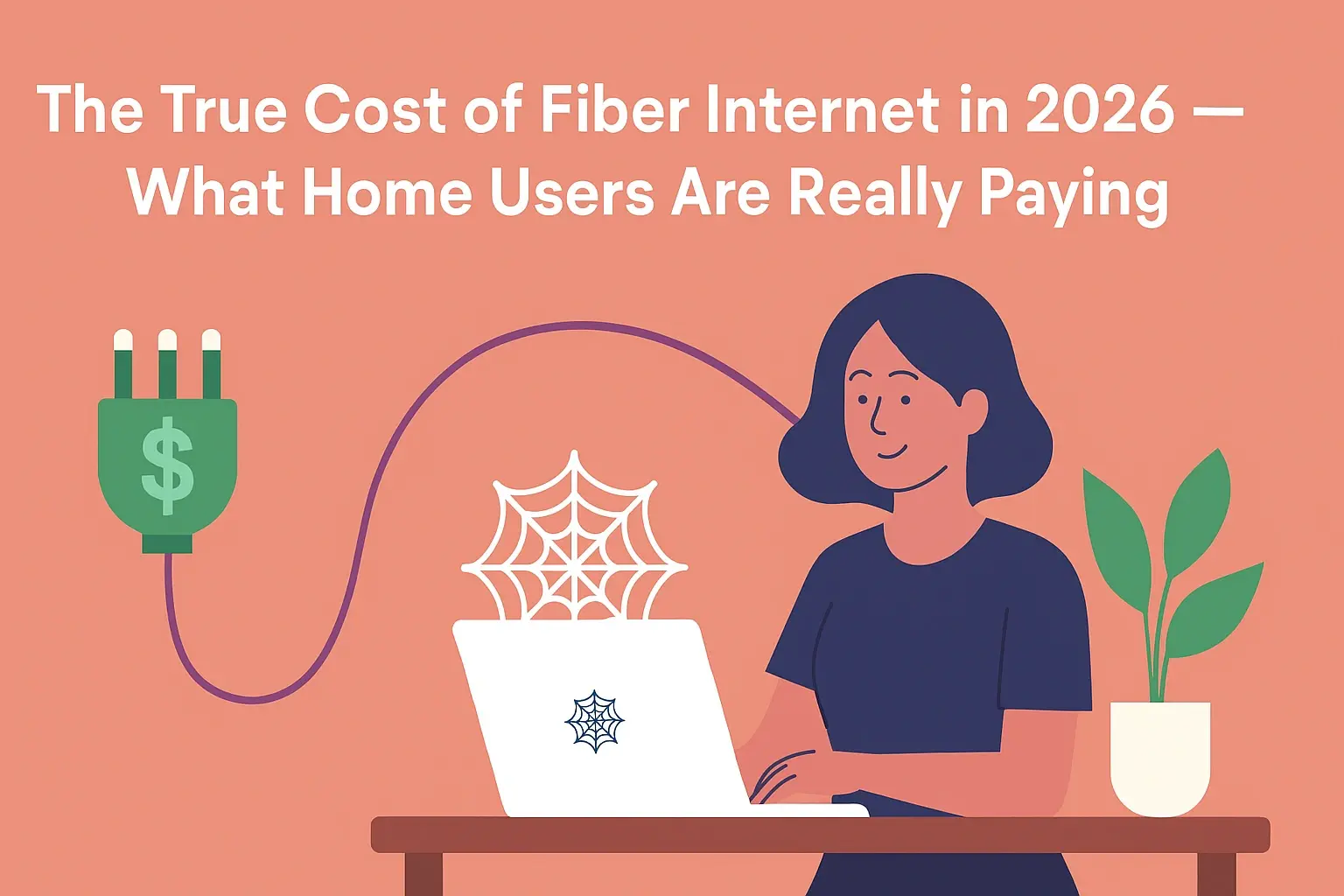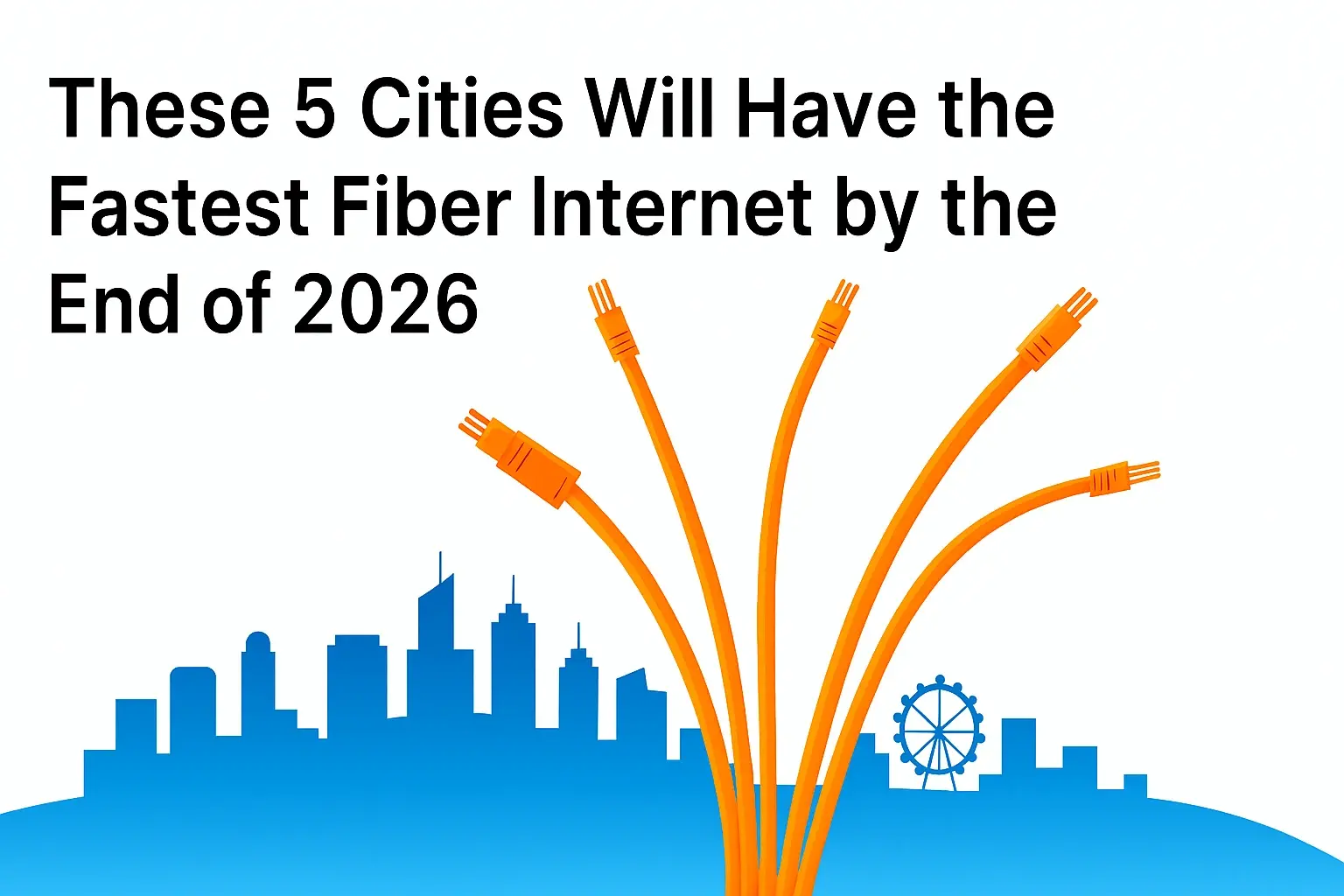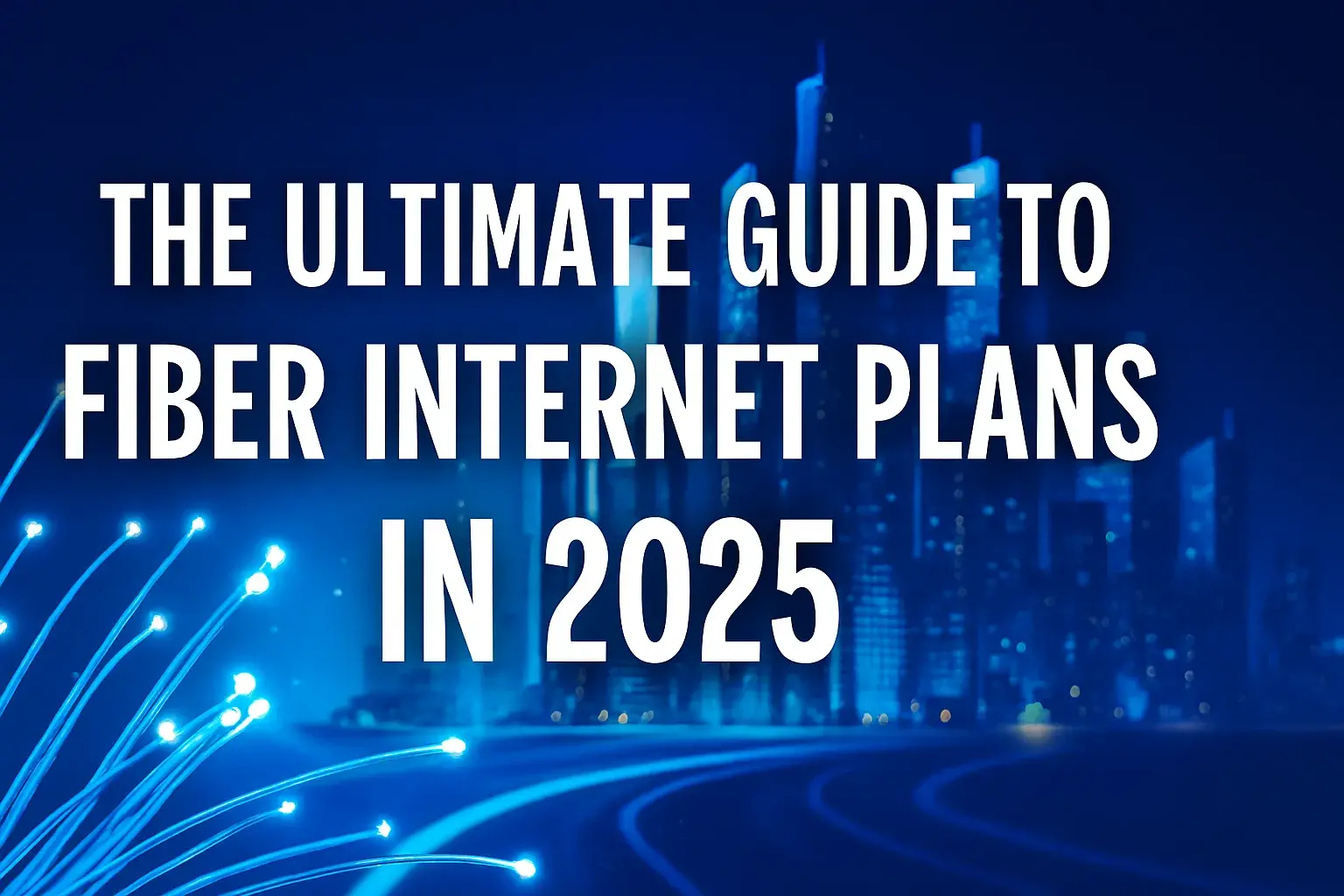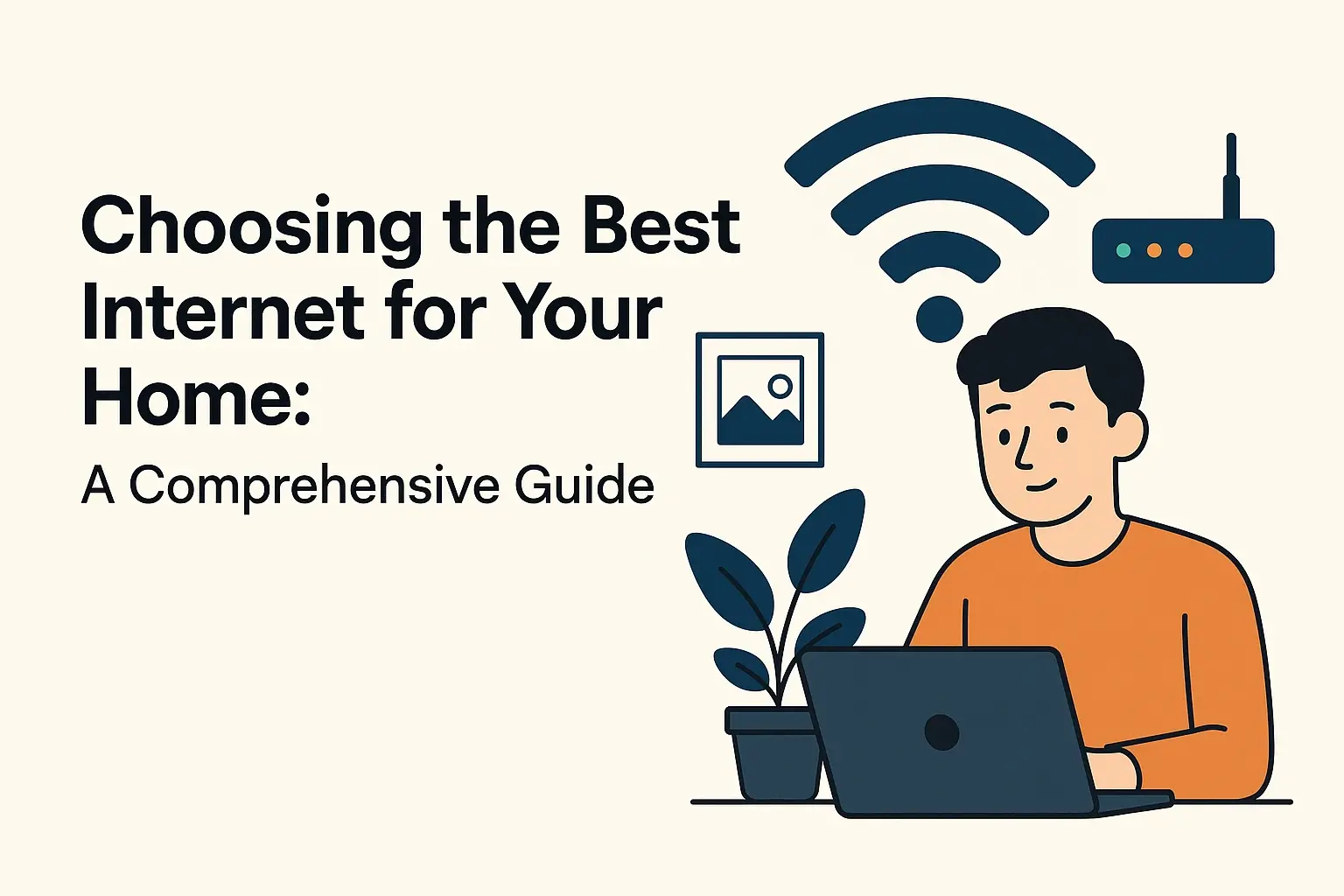Fiber Optic Internet - Pros & Cons
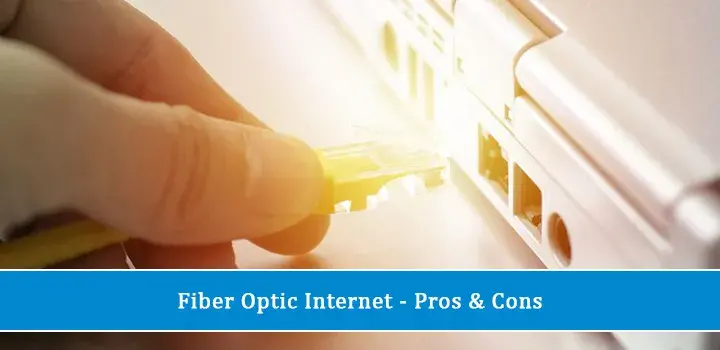
Fiber optic internet offers unparalleled speeds and reliability, making it the gold standard for modern connectivity. This comprehensive guide delves into the advantages and disadvantages of fiber optic internet, helping you make an informed decision for your home or business in 2025.
What is Fiber Optic Internet?
Fiber optic internet utilizes thin strands of glass or plastic, called optical fibers, to transmit data as pulses of light. Unlike traditional copper wires that carry electrical signals, fiber optics offer a revolutionary way to deliver high-speed, reliable internet connectivity, transforming how we work, play, and communicate in 2025.
The Pros of Fiber Optic Internet
Fiber optic internet is rapidly becoming the preferred choice for consumers and businesses alike, thanks to a multitude of advantages that significantly outperform older technologies. In 2025, its benefits are more pronounced than ever, addressing the growing demands of our digital lives.
Unmatched Speed and Bandwidth
The most significant advantage of fiber optic internet is its incredible speed. Data travels as light pulses through glass fibers, allowing for speeds that are orders of magnitude faster than traditional cable or DSL. In 2025, residential fiber plans commonly offer symmetrical download and upload speeds of 1 Gbps (Gigabit per second), with many providers now offering 2 Gbps, 5 Gbps, and even 10 Gbps tiers. This means you can download large files in seconds, stream 8K video without buffering, and participate in high-definition video conferences seamlessly. The increased bandwidth also means that multiple devices in your household can operate at full speed simultaneously without any noticeable degradation in performance. For businesses, this translates to faster data transfers, improved cloud access, and more efficient operations. The theoretical maximum speed of fiber optics is incredibly high, far exceeding the current practical limitations of other internet technologies. As of 2025, the average advertised download speed for fiber optic connections in urban areas is approximately 940 Mbps, with upload speeds averaging around 880 Mbps. This is a stark contrast to cable internet, which typically offers download speeds in the hundreds of Mbps but significantly lower upload speeds, often below 50 Mbps.
Superior Reliability and Stability
Fiber optic cables are far less susceptible to interference from electromagnetic sources, weather conditions, and physical wear and tear compared to copper cables. This inherent resilience translates into a more stable and reliable internet connection. You're less likely to experience dropped connections, slowdowns during peak hours, or disruptions due to external factors. This reliability is crucial for businesses that depend on consistent uptime for their operations, as well as for individuals who rely on their internet for remote work, online education, and critical communication. In 2025, studies consistently show that fiber optic connections experience significantly fewer outages and service interruptions than cable or DSL. The uptime for fiber services often exceeds 99.99%, a level of performance that is difficult for other technologies to match. This stability is a direct result of the physical properties of glass fibers, which do not conduct electricity and are thus immune to issues like power surges or lightning strikes that can affect copper-based networks.
Lower Latency for Gaming and Real-time Applications
Latency, often referred to as "ping," is the time it takes for data to travel from your device to a server and back. For activities like online gaming, virtual reality, and high-frequency trading, low latency is paramount. Fiber optic internet boasts significantly lower latency than other technologies because light travels much faster and more directly through fiber optic cables than electrical signals through copper. In 2025, typical latency for fiber connections can be as low as 1-10 milliseconds, whereas cable internet might range from 10-50 milliseconds, and DSL can be even higher. This difference might seem small, but for competitive gamers, it can mean the difference between winning and losing. Similarly, for video conferencing and remote collaboration tools, lower latency ensures smoother, more responsive interactions, reducing delays and making conversations feel more natural. The reduced signal degradation over distance also contributes to consistently low latency, regardless of how far you are from the local exchange.
Future-Proofing Your Connection
The demand for internet bandwidth is only increasing. With the rise of 8K streaming, immersive virtual and augmented reality experiences, the Internet of Things (IoT), and increasingly complex cloud-based applications, the need for higher speeds and greater bandwidth will continue to grow. Fiber optic technology has the inherent capacity to support these future demands. Unlike copper-based networks, which are nearing their physical limits, fiber optic cables can be upgraded to support speeds far beyond what is currently available simply by upgrading the equipment at either end. This means that investing in fiber optic internet today is an investment in a connection that will remain robust and capable for many years to come. As of 2025, many new residential developments are being built with fiber infrastructure already in place, recognizing its long-term viability. This foresight ensures that residents will have access to the fastest and most reliable internet for the foreseeable future, without needing costly infrastructure upgrades.
Increased Security
Fiber optic cables are inherently more secure than copper cables. Tapping into a fiber optic cable to intercept data is significantly more difficult and detectable than with copper. Unlike electrical signals in copper wires, light pulses in fiber optics do not radiate outward, making them harder to eavesdrop on without physically disrupting the connection. Any attempt to splice or tap into a fiber optic cable would cause a detectable loss of signal, immediately alerting the network provider. This makes fiber a more secure option for sensitive data transmission, which is increasingly important for both businesses and individuals handling personal or confidential information in 2025.
Energy Efficiency
While not always the primary consideration for consumers, fiber optic technology is also more energy-efficient than traditional copper networks. Optical signals require less power to transmit over long distances compared to electrical signals. This can lead to lower energy consumption for internet service providers, which can, in turn, translate to more sustainable operations and potentially lower operational costs that could be passed on to consumers. In an era where environmental consciousness is growing, this efficiency is a subtle but valuable benefit.
Resistance to Environmental Factors
Fiber optic cables are made of glass or plastic and are not affected by common environmental issues that plague copper wiring. They are resistant to corrosion, water damage, and temperature fluctuations. This means that fiber optic networks are generally more durable and require less maintenance in harsh environments. Unlike copper cables that can degrade over time due to oxidation or moisture ingress, fiber optic cables maintain their signal integrity for longer periods, contributing to their overall reliability and longevity. This is particularly advantageous in regions with extreme weather conditions or corrosive atmospheres.
The Cons of Fiber Optic Internet
Despite its numerous advantages, fiber optic internet is not without its drawbacks. Understanding these limitations is crucial for making a well-rounded decision about whether fiber is the right choice for your specific needs and circumstances in 2025.
Cost of Installation and Equipment
One of the primary barriers to widespread fiber adoption is the cost associated with deploying and maintaining the infrastructure. Laying new fiber optic cables, especially underground, is a labor-intensive and expensive process. This high upfront cost can sometimes translate to higher monthly subscription fees for consumers compared to older technologies, although this gap is narrowing. In 2025, while monthly costs are becoming more competitive, the initial installation fee for fiber can still be a deterrent for some. Some providers may waive installation fees as part of promotional offers, but it's essential to inquire about these costs upfront. Additionally, while many providers supply a modem/router combo, some may require specific fiber-compatible equipment, which could incur additional rental or purchase costs.
Limited Availability in Rural and Underserved Areas
The high cost of deployment means that fiber optic networks are often concentrated in urban and suburban areas where the population density makes the investment more economically viable for internet service providers. Rural and remote communities, as well as some underserved urban neighborhoods, may have limited or no access to fiber optic internet. While government initiatives and private investments are working to expand fiber coverage, it remains a significant challenge. As of 2025, it's estimated that only about 40-50% of US households have access to fiber optic internet, with significant regional disparities. This lack of availability is the most significant hurdle for many potential users.
Potential for Damage During Installation
While fiber optic cables are durable once installed, the installation process itself can be disruptive and carries a risk of damage. Laying new cables, whether overhead or underground, can involve digging, trenching, and drilling, which can potentially damage existing utility lines, landscaping, or property. While professional installers are trained to minimize these risks, accidents can happen. In some cases, the installation might require drilling through walls or foundations, which, if not done carefully, could cause cosmetic or structural damage. It's important to ensure that the installation crew is reputable and insured, and to discuss any concerns about property protection beforehand.
Specialized Technicians Required
Working with fiber optic cables requires specialized knowledge and tools. The glass fibers are extremely delicate and can be easily damaged if handled improperly. Splicing fibers together, terminating cables, and troubleshooting connection issues all require trained professionals. This means that if you experience a problem with your fiber optic connection, you will likely need a technician with specific fiber optic expertise to resolve it, which could potentially lead to longer wait times for repairs or higher service call costs compared to simpler copper-based technologies.
Limited Router Compatibility in Some Cases
While most modern routers are compatible with fiber optic internet, there can be instances where older or specific types of routers may not be directly compatible with the fiber optic network's termination point (ONT - Optical Network Terminal). The ONT is a device that converts optical signals into electrical signals that your router can understand. Some providers may supply their own modem/router combination unit, which simplifies compatibility but might limit your choice of networking hardware. If you wish to use your own high-end router, it's crucial to verify its compatibility with the fiber service and the provider's ONT setup. As of 2025, most Wi-Fi 6 and Wi-Fi 6E routers are generally compatible, but it's always wise to check specifications.
Fiber Optic Internet vs. Other Technologies
To truly appreciate the advantages of fiber optic internet, it's helpful to compare it with other common internet technologies available in 2025.
Fiber vs. Cable
Cable internet, delivered over coaxial cables originally designed for television, has been a popular high-speed option for years. However, it has inherent limitations compared to fiber.
| Feature | Fiber Optic Internet | Cable Internet |
|---|---|---|
| Speed | Symmetrical speeds up to 10 Gbps. Significantly faster upload speeds. | Asymmetrical speeds, typically up to 1 Gbps download, much lower upload speeds (e.g., 50-100 Mbps). |
| Reliability | Highly reliable, less prone to interference and weather. | Can be affected by network congestion and distance from the local node. |
| Latency | Very low (1-10 ms). | Moderate (10-50 ms). |
| Bandwidth Capacity | Virtually unlimited, future-proof. | Limited by the coaxial infrastructure. |
| Cost | Installation can be higher, monthly costs becoming competitive. | Generally lower installation costs, competitive monthly fees. |
| Availability | Growing, but less widespread than cable. | Widely available in most urban and suburban areas. |
Key Takeaway: Fiber offers superior speed, reliability, and future-proofing, making it the better long-term investment if available and affordable. Cable is a good middle-ground option for many users who need decent speeds but can't access fiber.
Fiber vs. DSL
Digital Subscriber Line (DSL) internet uses existing telephone lines to transmit data. It's one of the oldest broadband technologies and is generally the slowest option among the mainstream choices.
| Feature | Fiber Optic Internet | DSL Internet |
|---|---|---|
| Speed | Symmetrical speeds up to 10 Gbps. | Asymmetrical speeds, typically 1-100 Mbps download, much lower upload speeds. |
| Reliability | Highly reliable, immune to interference. | Can be affected by distance from the central office and line quality. |
| Latency | Very low (1-10 ms). | Higher latency (20-100+ ms), varies significantly. |
| Bandwidth Capacity | Virtually unlimited. | Limited by copper telephone line capacity. |
| Cost | Higher installation potential, competitive monthly fees. | Generally lowest installation and monthly costs. |
| Availability | Growing, but less widespread. | Very widely available, especially in rural areas where other options are scarce. |
Key Takeaway: Fiber is vastly superior to DSL in every performance metric. DSL is only a viable option when no other broadband technology is available, or for users with extremely basic internet needs and a very tight budget.
Fiber vs. 5G Home Internet
5G Home Internet, utilizing the latest cellular network technology, has emerged as a wireless alternative to fixed-line broadband. It offers competitive speeds but differs fundamentally from fiber.
| Feature | Fiber Optic Internet | 5G Home Internet |
|---|---|---|
| Speed | Symmetrical speeds up to 10 Gbps. | Asymmetrical speeds, typically 100-1000 Mbps download, upload speeds vary but are generally lower than download. |
| Reliability | Extremely reliable, consistent performance. | Can be affected by signal strength, network congestion, physical obstructions (walls, trees), and distance from tower. |
| Latency | Very low (1-10 ms). | Low to moderate (10-40 ms), can fluctuate. |
| Bandwidth Capacity | Virtually unlimited. | Shared bandwidth with mobile users, can experience throttling during peak times. |
| Installation | Requires professional installation, potential for digging. | Typically self-install, plug-and-play device. |
| Availability | Growing, but limited by physical infrastructure. | Rapidly expanding, but dependent on 5G tower coverage. |
| Data Caps | Generally no data caps. | Some plans may have data caps or throttling after a certain usage threshold. |
Key Takeaway: Fiber offers more consistent, reliable, and symmetrical speeds with lower latency, making it ideal for demanding applications. 5G Home Internet is a convenient, often self-installable option with good speeds, but its performance can be more variable and dependent on external factors. For users prioritizing absolute stability and maximum performance, fiber remains the superior choice in 2025.
Making the Switch to Fiber
Deciding to switch to fiber optic internet is an exciting step towards a faster, more reliable online experience. Here's a breakdown of what to expect during the process in 2025.
Checking Availability
The first and most crucial step is to determine if fiber optic internet is available at your address. Most major internet service providers (ISPs) have online tools where you can enter your zip code or full address to check for serviceability. You can also contact providers directly via phone. Keep in mind that availability can change rapidly as new fiber networks are deployed. It's worth checking periodically even if it wasn't available previously. Some providers may also offer notifications when fiber becomes available in your area. As of 2025, many smaller, regional ISPs are also expanding their fiber networks, so don't limit your search to only the largest national providers.
Understanding Plans and Pricing
Once you've confirmed availability, you'll need to explore the different plans offered. Fiber plans are typically distinguished by their speeds (download and upload) and sometimes by data allowances, though most fiber plans in 2025 are unlimited. Pay close attention to:
- Advertised Speed: Look for symmetrical speeds (download and upload being the same) as this is a hallmark of fiber.
- Monthly Cost: Note the base price and any introductory offers that will expire.
- Installation Fees: Ask if there are any upfront charges for installation.
- Equipment Rental/Purchase: Understand the cost of the modem/router provided by the ISP.
- Contract Length: Some plans may require a contract, while others are month-to-month.
- Data Caps: While rare for fiber, confirm there are no hidden data limits.
Don't hesitate to ask the sales representative to clarify any terms or pricing structures. Comparing offers from multiple providers is essential to securing the best value.
The Installation Process
Fiber installation typically involves a technician visiting your home or business. The process generally includes:
- Exterior Connection: A fiber optic cable will be run from the street or a nearby utility pole to your home. This might involve aerial installation (attaching to existing poles) or underground burial (trenching or directional boring).
- Interior Entry Point: The technician will drill a small hole through an exterior wall to bring the fiber cable inside. They will then install a small termination box called an Optical Network Terminal (ONT).
- ONT Setup: The ONT converts the light signals from the fiber optic cable into electrical signals that your router can use.
- Router Connection: The technician will connect your router (either provided by the ISP or your own compatible router) to the ONT via an Ethernet cable.
- Testing: Finally, the technician will test the connection to ensure it's working at the advertised speeds and that all your devices can connect properly.
The entire process usually takes a few hours. The technician will work with you to determine the best placement for the ONT and ensure minimal disruption to your property. It's important to be present during the installation to oversee the work and ask any questions.
Conclusion: Is Fiber Optic Internet Right for You?
Fiber optic internet represents the pinnacle of current broadband technology, offering unmatched speeds, exceptional reliability, and low latency that are essential for today's connected world. In 2025, its advantages in terms of performance and future-proofing are undeniable, making it the ideal choice for gamers, streamers, remote workers, and anyone who demands the best from their internet connection. While the initial cost of deployment and limited availability in certain areas remain significant challenges, the ongoing expansion of fiber networks and increasing competition are making it more accessible and affordable than ever before. If fiber optic internet is available at your location and fits within your budget, the benefits it provides—from seamless 8K streaming and lag-free gaming to efficient remote work and a robust connection for all your smart devices—make it a worthwhile investment. Carefully weigh the pros and cons against your specific needs and circumstances to make the most informed decision for your digital future.
